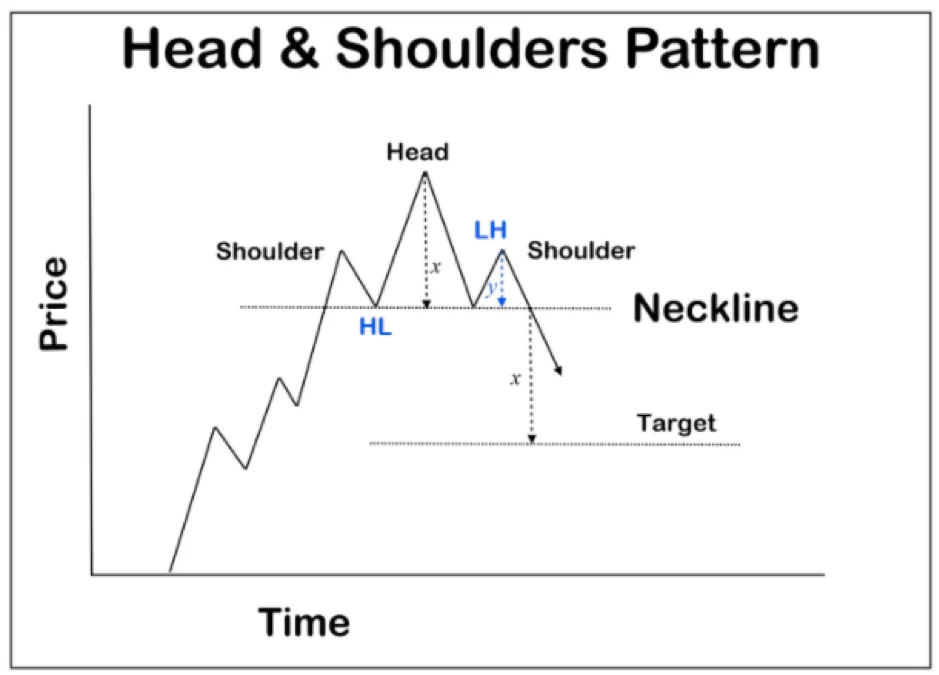Classic chart patterns are those that show a historical summary of prices over some time. It covers various techniques for applying technical analysis to financial market analysis. While some traders base their analyses on price action, others use oscillators and indicators. It is said that Classic Chart Patterns are a component of accumulation when they form a bullish reversal pattern. However, if they form at the peak of a price movement right before a bearish reversal, they are included in the distribution.
Table of Contents
What Are Classic Chart Patterns?
A collection of frequently occurring price formations found on price charts is referred to as traditional or classic chart patterns. Analysts and technical traders use these charts extensively to forecast future price movements and develop trading strategies. They are a fundamental component of the technical analysis methodology.
The foundation of technical chart analysis is the notion that prices typically move in waves or trends and that historical price performance can be a reliable indicator of an asset’s future price movement.
These traditional patterns frequently rely on trend lines and levels of support and resistance. When a pattern emerges, traders search for a price level at which the market breaks above or below a given level. They then use this information to predict the direction of the market going forward.
Open a Free Demat Account on Zerodha and use Sensibull and Streak for Free
Understanding Classic Chart Patterns

Traders use chart patterns as tools to enter and exit trading positions. It’s critical to comprehend how these chart patterns operate. All charting techniques, including classical charting, rely on behavioral or psychological motivations that are not explicitly stated. Traditional chart patterns, like head and shoulders triangles and others, are believed to be a sign of insider trading or pool operators who purposefully manipulate the market during three distinct stages: accumulation, markup distribution, and markdown.
Classic chart patterns mostly depend on the interpretation of trend lines, geometric formations, and price and volume relationships, regardless of the underlying factors that are thought to have contributed to their formation.
It is thought that traditional chart patterns are excellent predictors of market sentiment. They frequently cluster at points of resistance or support. Time plus trades will draw these patterns, and these trend lines show areas where traders were interested in exchanging their holdings of assets.
Also Read
Single CandleStick Patterns & Their Type: Ultimate Guide 2024
Let Us Understand Different Types Of Classical Chart Patterns
1. Head and Shoulder Chart Pattern

A bearish reversal pattern is the head and shoulders pattern. After an upward trend, it emerges. Three successive tops form this pattern, with the middle peak being higher than the other two. The two side peaks are referred to as shoulders, and the central peak is known as the head.
The neckline forms when the intermediate troughs join. The objective is typically reached by taking a short trade with a stop loss placed above the top of the closest shoulder. Typically, the target is defined as the distance, projected from the point of break, between the head and neckline.
The conviction is on the higher side of the reversal if the right shoulder’s down leg has a higher volume and the breakout occurs at a higher volume. Simply said, an inverse Head and Shoulder is the Head and Shoulder mirrored. This frequently serves as an extremely powerful bullish reversal pattern.
2. Triangle Pattern

One of the most well-known chart patterns is the triangle. In technical analysis, it is employed. The three most prevalent triangle types are symmetrical, descending, and ascending, and they differ in their construction and applications.
These charts have a duration of a few months or a week. Triangle patterns can predict either a reversal or a continuation of the prior trend, in contrast to other chart patterns that indicate a clear directionality to the upcoming price movement.
Open a Free Demat Account on Zerodha and use Sensibull and Streak for Free
3. Double Bottom and Double Top Patterns

One of the most widely used bearish patterns is the double top. After peaking, the stock price will retrace to a level of support. After that, it will peak once more before reverting to the previous trend. It appears to be a M pattern. A bullish reversal pattern known as a double bottom is the opposite of a double top.
After peaking, the stock price will retrace to a level of resistance. After that, it will peak once more before reverting to the previous trend.
Also Read
8 Important Bearish Candlestick Patterns Every Trader Should Know
4. Triple Bottom and Triple Top Chart Patterns

Following an uptrend, a triple-top chart pattern is a bearish reversal pattern. Three peaks above a neckline or support level form this pattern. Following a robust uptrend, the first peak forms, and it then retraces back to the neckline. Following a significant uptrend, this initial peak forms before retracing to the neckline. When the prices move back to the neckline following the formation of the third peak, the pattern is said to be complete.
The confirmation of the bearish trend reversal occurs when prices breach the neckline or the support level following the formation of three peaks.
Following the downtrend, a bullish reversal pattern known as a triple bottom pattern develops on the chart. Three peaks are formed below a neckline/resistance level in this pattern. Following a significant downtrend, the first peak forms, and it then retraces back to the neckline. When the prices move back to the neckline following the formation of the third peak, the pattern is said to be complete.
The confirmation of a bullish trend reversal occurs when prices break above the resistance level or the neckline following the formation of three peaks.
5. Cup and Handle Chart Pattern

The Cup and Handle pattern, which has a lower trading volume on its right side, is regarded as a bullish signal. The formation of the pattern could take as little as seven weeks or as much as 65 weeks. A cup and handle pattern is a type of technical chart pattern where the handle has a slight downward drift and the cup has a “u” shape. There must be a preceding trend for a pattern to be considered a continuation.
The cup is a consolidation pattern with legitimate support at the bottom of the “U,” thanks to the softer “U” shape. Equal highs on both sides of the cup would characterize the ideal pattern, but this isn’t always the case.
The pullback that creates the handle occurs after the high forms on the cup’s right side. This handle is sometimes just a short pullback, and other times it looks like a flag or pennant that slopes downward.
The formation and major breakout are more bullish the smaller the retracement. The cup may last anywhere from one to six months, and on weekly charts, it may even last longer. The duration of the handle can range from one to multiple weeks, with a completion time of one to four weeks.
Also Read
8 Bullish Candlestick Patterns: The Ultimate Guide 2024
6. Pennants or Flag Chart Patterns

The pennant pattern, which represents the second half of a flagpole, is a continuation pattern that arises when there are significant movements in security, followed by a period of consolidation with convergent trend lines. The breakout movement then occurs in the same direction as the initial large movement.
Price charts of financially traded assets frequently display the flag and pennant chart patterns. The patterns are distinguished by a distinct price trend direction.
7. Rounding Bottom and Rounding Top Chart Patterns

Reversal patterns like the rounding top and bottom are meant to detect when a trend will end and indicate a possible turning point. The Rounded Top, also known as the Inverse Saucer, is shaped like an inverted “U.” It denotes the end of an upward trend and potentially the beginning of a downward trend.
The rounded bottom pattern, a saucer, is as obvious as a ‘U’ formation on the price chart. It denotes the end of a downward trend and potentially the beginning of an upward trend.
8. Wedges Chart Pattern

Similar to symmetrical triangle patterns, wedge patterns are classic chart patterns that show trading that starts over a large price range and then contracts as it moves forward.
Nevertheless, wedge patterns are reversal signals and have a strong bias towards being either bullish for falling wedges or bearish for rising wedges, in contrast to symmetrical triangles. Since wedge patterns frequently resemble background trading activity on charts, they can be challenging to identify and trade successfully.
Conclusion
Among the most popular Technical Analysis patterns are Classic Chart Patterns. They shouldn’t be regarded in isolation, though, just like any other market analysis technique. Before making any decisions, it is advisable to obtain confirmation.
People Also Read
Types of Trading in Stock Market
Open a Free Demat Account on Zerodha and use Sensibull and Streak for Free







12 thoughts on “Understanding Classic Chart Patterns and Types”